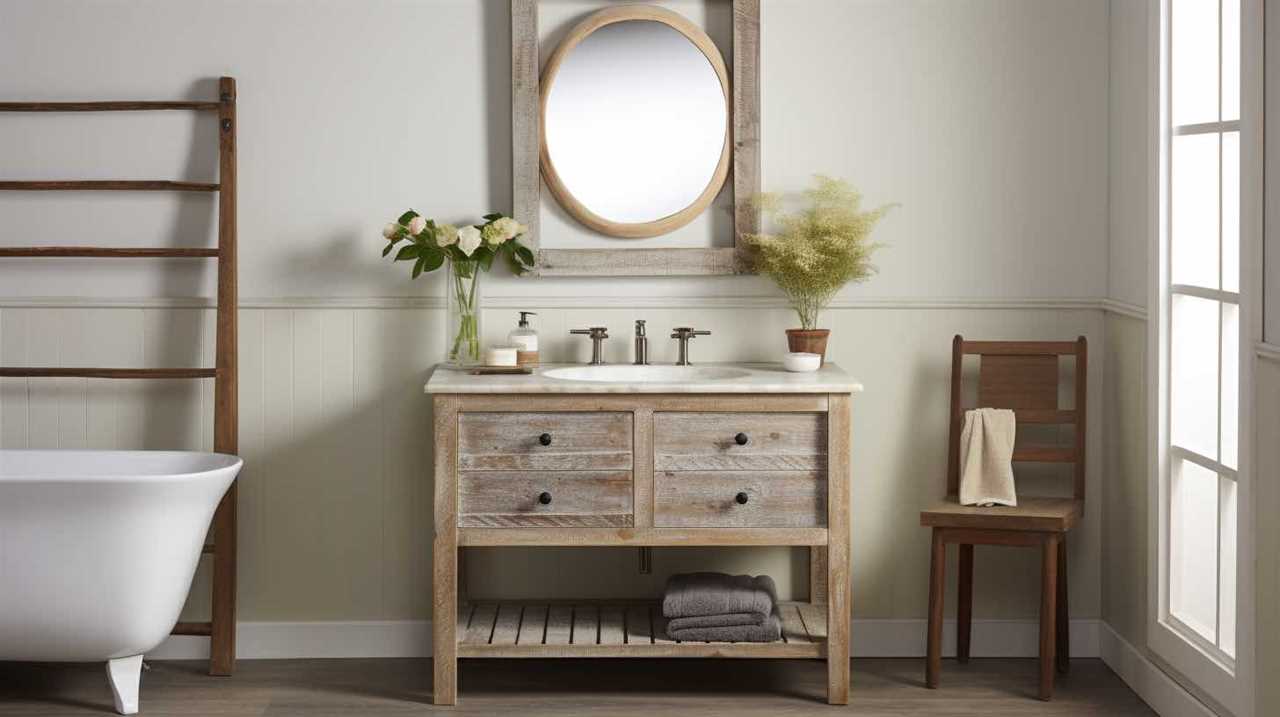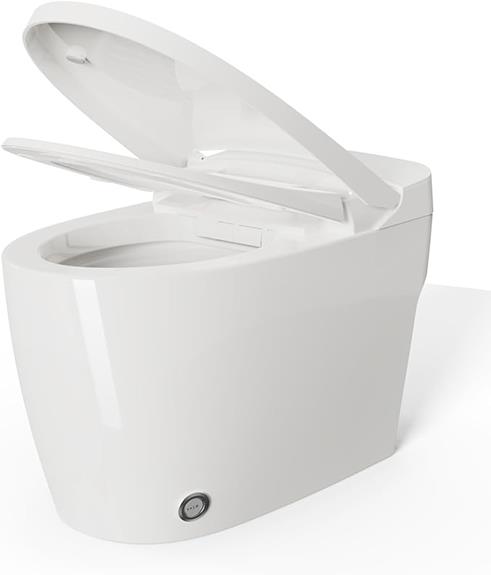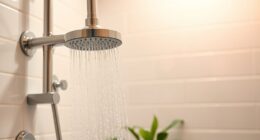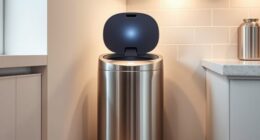Are you fed up with the constant struggle of dealing with a clogged bathroom sink? We understand your frustration! Having to deal with a clogged sink can be a major hassle, but don’t worry, because we have the solutions you’re looking for.
In this article, we will guide you through the common causes of a clogged bathroom sink, provide you with step-by-step instructions to unclog it, and share some natural remedies to try before resorting to chemicals.
Say goodbye to those pesky clogs and hello to a smoothly flowing sink!
Key Takeaways
- Accumulation of hair and debris in the drain is a common cause of a clogged bathroom sink.
- Using home remedies like baking soda and vinegar, a plunger, boiling water, or a salt and baking soda mixture can effectively unclog a bathroom sink.
- For severe clogs, it is recommended to seek professional plumbing services as they have the necessary tools and expertise to handle complicated clogs.
- To prevent future clogs, it is important to remove visible debris or hair, implement a regular maintenance routine, flush the drain with boiling water, use drain covers or strainers, and avoid flushing inappropriate items down the sink.
Common Causes of a Clogged Bathroom Sink
One of the most common causes of a clogged bathroom sink is the accumulation of hair and debris in the drain. When we wash our hair or shave, loose strands often find their way into the sink, eventually leading to a blockage. Additionally, soap scum, toothpaste, and other bathroom products can build up over time, further contributing to the clog.

To address this issue, there are effective home remedies for unclogging bathroom sinks. One popular method is to use a combination of baking soda and vinegar, which creates a foaming action that helps break down the clog. Another option is using a plunger to create pressure and dislodge the obstruction.
However, for severe bathroom sink clogs, it’s recommended to seek professional plumbing services. These experts have the necessary tools and expertise to handle more complicated clogs and ensure a thorough unclogging of the sink.
Tools and Materials You Will Need
To address a clogged bathroom sink, we’ll need a few essential tools and materials. Here are the items you’ll need:
- Plunger: An effective tool for dislodging clogs by creating pressure and suction. With proper technique, it can quickly clear minor blockages.
- Drain Snake: A flexible tool designed to reach deeper clogs. By inserting it into the drain and rotating, you can break up and remove stubborn debris.
- Rubber Gloves: Protect your hands from any unpleasant substances while working on the clog.
- Bucket: To catch any water that may overflow during the unclogging process, preventing a mess.
Remember to use the plunger with forceful, repetitive motions and apply proper drain snake techniques to navigate through the pipes. With these tools and materials, you’ll be well-equipped to tackle a clogged bathroom sink like a pro.

Step-By-Step Instructions to Unclog a Bathroom Sink
Now let’s dive into the process of unclogging a bathroom sink using step-by-step instructions. When faced with a clogged bathroom sink, you have two options: hiring professional plumbing services or attempting a DIY drain cleaning method. For those who prefer to tackle the issue themselves, here’s a simple guide to follow:
| Step | Instructions | Tools/Materials |
|---|---|---|
| 1 | Remove any visible debris from the sink drain. | Gloves, tweezers |
| 2 | Pour boiling water down the drain to dissolve grease and soap scum. | Kettle, pot |
| 3 | Use a plunger to create suction and dislodge the clog. | Plunger |
| 4 | If the clog persists, try using a drain snake to break it up. | Drain snake |
Natural Remedies to Try Before Using Chemicals
Before resorting to chemicals, we can try using natural remedies to unclog a bathroom sink. Here are some alternative solutions and non-toxic options that you can try:
- Baking soda and vinegar: Mix equal parts of baking soda and vinegar and pour it down the drain. Let it sit for about 30 minutes, then flush it with hot water. The chemical reaction can help break down the clog.
- Boiling water: Simply pour boiling water down the drain. This can help dissolve any grease or soap buildup that may be causing the clog.
- Salt and baking soda: Mix equal parts of salt and baking soda, then pour it down the drain. Let it sit for a few hours before flushing it with hot water. This can help remove stubborn clogs.
- Plunger: Use a plunger to create suction and push the clog through the pipes. Make sure to cover the overflow drain before plunging.
Tips for Preventing Future Clogs in Your Bathroom Sink
To prevent future clogs in our bathroom sink, we can take proactive steps to maintain its proper functioning. Implementing a regular maintenance routine is crucial in keeping our sink clear and free from blockages.
Firstly, we should make it a habit to remove any visible debris or hair from the drain after each use. This prevents them from accumulating and causing clogs over time.

Additionally, we can perform DIY sink cleaning using natural solutions like baking soda and vinegar. Simply pour a mixture of these ingredients down the drain, followed by hot water, to dissolve any buildup.
Regularly flushing the drain with boiling water can also help prevent grease and soap residue from solidifying and causing obstructions.
Frequently Asked Questions
What Are Some Signs That Indicate a Bathroom Sink Is Clogged?
Some signs of a clogged bathroom sink include slow drainage, gurgling sounds, and unpleasant odors. To prevent clogs, avoid pouring grease or hair down the drain and use a drain cover.
Can I Use a Plunger to Unclog a Bathroom Sink?
Yes, we can use a plunger to unclog a bathroom sink. It is a common and effective method. Pros include simplicity and cost-effectiveness, but cons may arise if the clog is severe or if the sink is fragile.

How Long Does It Take for a Natural Remedy to Unclog a Bathroom Sink?
Natural remedies for unclogging a bathroom sink can be effective, but the time it takes to see results can vary. To prevent clogs in the first place, regularly clean the sink and avoid pouring grease or other debris down the drain.
Are There Any Specific Chemicals That Should Never Be Used to Unclog a Bathroom Sink?
When it comes to unclogging a bathroom sink, it’s important to avoid certain chemicals. Chemical alternatives and safe unclogging methods are the key to effectively and responsibly solving the problem.
Is It Possible for a Clogged Bathroom Sink to Cause Other Plumbing Issues in the House?
Yes, a clogged bathroom sink can lead to water damage in the house. Other plumbing issues caused by a clogged sink include backups in other drains and potential pipe damage. It’s important to address clogs promptly to prevent further problems.
Conclusion
To wrap it up, unclogging a bathroom sink doesn’t have to be a daunting task. By understanding the common causes of clogs and following our step-by-step instructions, you can easily restore proper drainage.

Remember, prevention is key, so try out the natural remedies and implement our tips to keep your bathroom sink clog-free.
Don’t let a clogged sink slow you down, tackle it head-on and enjoy smooth-flowing drains once again.










